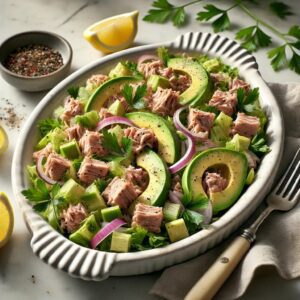

Fermented Foods: The Gut-Loving, Immunity-Boosting Secret You Need in Your Life


Arya Soleil
Fermented foods might not be the flashiest trend on the grocery shelf, but they’ve stood the test of time for a reason. From ancient traditions to modern health hacks, these tangy, funky, and probiotic-packed foods are making a huge comeback—and for good reason. If you’re trying to improve digestion, strengthen your immune system, reduce inflammation, or just feel more energized, adding fermented foods to your diet is a no-brainer.
Let’s dive into what fermented foods are, why they matter, and how you can start incorporating them into your life without going full health-nut.
What Are Fermented Foods Anyway?
Fermentation is a natural process in which microorganisms like bacteria, yeast, or fungi break down sugars and starches into simpler substances—often resulting in tangy, zesty, or sour flavors. These foods aren’t just altered in taste; they’re transformed into nutritional powerhouses.
Fermented foods have been consumed for centuries across all cultures—think kimchi in Korea, sauerkraut in Germany, yogurt in Greece, and kombucha in China. And while the reasons may have started with food preservation, the health benefits quickly became clear.
The Three “Biotics” Behind the Magic: Prebiotics, Probiotics, and Postbiotics
When we talk about fermented foods, you’ll often hear these three terms thrown around. Here’s what they actually mean, without the science-jargon overload.
Prebiotics are types of fiber that act like fertilizer for your good gut bacteria. They’re the fuel that probiotics need to thrive. You’ll find them in foods like garlic, onions, leeks, asparagus, and bananas.
Probiotics are the actual live bacteria found in fermented foods. They help maintain or restore a healthy balance of gut flora. Think of them as the “good guys” who help keep your digestive system in check.
Postbiotics are the by-products created when probiotics consume prebiotics. These compounds support your immune system, reduce inflammation, and have all kinds of other perks. You don’t need to supplement them—they’re created naturally when you eat whole fermented foods.
Health Benefits of Fermented Foods
Fermented foods aren’t just trendy—they’re genuinely good for you. Here’s a breakdown of the key benefits you can expect:
Improve Gut Health: Fermented foods flood your digestive system with beneficial bacteria that help restore balance. This can relieve bloating, gas, constipation, and even symptoms of IBS.
Boost Immunity: Your gut is home to about 70% of your immune system. A healthy microbiome means a stronger defense system, better resistance to infections, and faster recovery when you do get sick.
Reduce Inflammation: Chronic inflammation is linked to everything from joint pain to heart disease to autoimmune conditions. Fermented foods help calm the immune system and support your body’s natural anti-inflammatory processes.
Support Mental Health: There’s growing evidence that your gut and brain are deeply connected. A healthy gut microbiome can help ease anxiety, depression, and brain fog thanks to the production of neurotransmitters like serotonin.
Enhance Nutrient Absorption: Fermentation breaks down nutrients into more easily digestible forms and even increases levels of certain vitamins, like B12 and K2, that are often lacking in the modern diet.
Aid in Weight Management: A healthy gut can help regulate appetite and support a healthy metabolism. Probiotics may also help reduce fat mass and improve insulin sensitivity.
Support Detoxification: Fermented foods help your body process and eliminate toxins by supporting liver function and enhancing the gut’s ability to bind and excrete harmful compounds.
Types of Fermented Foods to Add to Your Diet
You don’t have to eat sauerkraut by the spoonful to benefit from fermented foods. There are tons of options to choose from, depending on your taste and dietary preferences:
Yogurt and Kefir: These dairy-based fermented products are full of probiotics and protein. Look for plain, unsweetened versions with “live and active cultures” listed on the label.
Sauerkraut and Kimchi: Cabbage-based and packed with fiber, these tangy condiments are great on sandwiches, grain bowls, or even eggs.
Kombucha: A fizzy, fermented tea that contains a variety of probiotics and organic acids. Just watch for added sugar.
Miso and Tempeh: Fermented soy products often used in Asian cuisine. Miso is great in soups or marinades, while tempeh can be grilled, sautéed, or crumbled into tacos.
Pickles: Not all pickles are fermented—some are just vinegar-based. Look for ones that are brined using salt and water and stored in the refrigerated section.
Sourdough Bread: Made using a natural yeast starter, sourdough is easier to digest and often better tolerated than conventional bread.
Apple Cider Vinegar: Look for raw, unfiltered versions that contain the “mother”—a cloudy substance full of probiotics and enzymes.
How to Incorporate Fermented Foods into Your Daily Routine
The key to making fermented foods work for you is consistency. Here are some simple, low-effort ways to include them in your meals:
Add a spoonful of sauerkraut or kimchi to your lunch plate
Mix miso paste into salad dressings, soups, or marinades
Use kefir or yogurt as a base for smoothies
Sip on a small glass of kombucha in the afternoon
Use tempeh as a plant-based protein in stir-fries or grain bowls
Swap your regular sandwich bread for sourdough
Drizzle apple cider vinegar into a vinaigrette or mix with water as a morning tonic
How Much is Enough?
You don’t need to go overboard. Start slow—especially if you’re new to fermented foods, as they can cause a bit of digestive disruption at first. Begin with one small serving a day, such as:
1/4 cup sauerkraut
1/2 cup yogurt or kefir
1 glass of kombucha
1 tablespoon miso paste in soup
Over time, you can increase the variety and frequency. Just listen to your body and see what feels right.
Tips for Choosing the Right Fermented Foods
Not all products labeled “fermented” actually contain live, beneficial bacteria. Here’s what to look for:
Check for “live and active cultures” on the label
Choose raw, unpasteurized versions (heat kills probiotics)
Skip products with added sugar, artificial flavors, or preservatives
Buy refrigerated items (shelf-stable ones are often pasteurized)
If you’re buying pickled items, make sure they were brined, not vinegar-preserved
DIY Fermentation: Worth It or Too Much Work?
Fermenting foods at home can be fun, economical, and surprisingly easy. Plus, it gives you total control over ingredients. Here are a few beginner-friendly ideas:
Homemade sauerkraut: Just cabbage, salt, and a mason jar
Kombucha: You’ll need a SCOBY (symbiotic culture of bacteria and yeast), tea, sugar, and time
Fermented carrots or pickles: Soak in saltwater brine for 5–7 days on the counter
Yogurt: You can make it at home using a starter culture and milk
It does take a bit of patience and cleanliness, but it’s totally doable—and oddly satisfying to watch your food transform over time.
What If You Have Digestive Issues or a Sensitive Stomach?
Fermented foods can be a game-changer, but they’re not for everyone. If you have a sensitive gut, SIBO (small intestinal bacterial overgrowth), or histamine intolerance, proceed with caution.
Start with small amounts
Try low-histamine options like coconut yogurt or short-fermented vegetables
Avoid highly carbonated or overly funky fermented products
Talk to your healthcare provider if you’re dealing with a chronic digestive condition
Pairing Fermented Foods with a Gut-Friendly Diet
Fermented foods work best as part of a holistic approach to gut health. Here are other habits and foods that can boost your results:
Eat plenty of fiber from vegetables, fruits, legumes, and whole grains
Limit processed foods, excess sugar, and artificial additives
Drink enough water to keep things moving through your digestive tract
Get regular exercise to stimulate gut motility
Manage stress, which can throw your gut-brain connection out of balance
Common Myths About Fermented Foods
Let’s bust a few misconceptions:
Myth: All fermented foods are probiotic. Not true—some are pasteurized or fermented for flavor, not bacteria.
Myth: You need to take probiotic supplements too. You can, but it’s not necessary if you’re eating a good variety of fermented foods.
Myth: They taste gross. Taste is subjective, but there are so many options to try—you’ll likely find one you love.
Myth: More is always better. Nope. Balance is key. Too much at once can actually upset your gut.
The Big Picture: Fermented Foods and Anti-Inflammatory Living
At the end of the day, fermented foods are a small but mighty part of an anti-inflammatory diet. They support your gut, immune system, brain, skin, and even your mood. When you combine fermented foods with other lifestyle habits—like eating whole foods, sleeping well, exercising, and managing stress—you build a strong foundation for long-term health.
You don’t have to make every meal a fermentation fiesta. Just a few servings per week can make a noticeable difference. Start small, stay consistent, and pay attention to how your body responds.
A Sample Day with Fermented Foods
Breakfast: Kefir smoothie with berries, banana, and chia seeds
Lunch: Grain bowl with quinoa, grilled vegetables, tempeh, and kimchi
Snack: Sourdough toast with avocado and sauerkraut
Dinner: Miso soup starter, followed by salmon and steamed veggies
Drink: Sparkling water with a splash of apple cider vinegar
Final Thoughts
Fermented foods are more than a passing health fad—they’re a time-tested, gut-loving secret that can transform the way you feel from the inside out. Whether you’re sipping kombucha, scooping yogurt, or crunching on pickled veggies, you’re doing your gut a favor with every bite.
Your body—and your taste buds—will thank you.
Recommended Reads

- June 9, 2025
Castor Oil in the Navel: A Forgotten Practice That Supports Digestion and Sleep
Home News Healthy Habits & Lifestyle Health Conditions &...


- June 9, 2025
Turmeric for Ulcers: A Natural Way to Soothe and Protect Your Stomach
Home News Healthy Habits & Lifestyle Health Conditions &...


- June 9, 2025
The Healing Power of Castor Oil Compresses: A Natural Therapy for Detox, Sleep, and Circulation
Home News Healthy Habits & Lifestyle Health Conditions &...


- June 9, 2025
Medicinal Mushrooms: Ancient Remedies with Modern Benefits
Home News Healthy Habits & Lifestyle Health Conditions &...


- June 9, 2025
Triphala: The Ancient Herbal Blend That Supports Digestion, Detox, and Longevity
Home News Healthy Habits & Lifestyle Health Conditions &...


- June 9, 2025
Mullein: Herbal Support for Lung Health and Clear Breathing
Home News Healthy Habits & Lifestyle Health Conditions &...

Fermented Foods: The Gut-Loving, Immunity-Boosting Secret You Need in Your Life

Fermented foods might not be the flashiest trend on the grocery shelf, but they’ve stood the test of time for a reason. From ancient traditions to modern health hacks, these tangy, funky, and probiotic-packed foods are making a huge comeback—and for good reason. If you’re trying to improve digestion, strengthen your immune system, reduce inflammation, or just feel more energized, adding fermented foods to your diet is a no-brainer.
Let’s dive into what fermented foods are, why they matter, and how you can start incorporating them into your life without going full health-nut.
What Are Fermented Foods Anyway?
Fermentation is a natural process in which microorganisms like bacteria, yeast, or fungi break down sugars and starches into simpler substances—often resulting in tangy, zesty, or sour flavors. These foods aren’t just altered in taste; they’re transformed into nutritional powerhouses.
Fermented foods have been consumed for centuries across all cultures—think kimchi in Korea, sauerkraut in Germany, yogurt in Greece, and kombucha in China. And while the reasons may have started with food preservation, the health benefits quickly became clear.
The Three “Biotics” Behind the Magic: Prebiotics, Probiotics, and Postbiotics
When we talk about fermented foods, you’ll often hear these three terms thrown around. Here’s what they actually mean, without the science-jargon overload.
Prebiotics are types of fiber that act like fertilizer for your good gut bacteria. They’re the fuel that probiotics need to thrive. You’ll find them in foods like garlic, onions, leeks, asparagus, and bananas.
Probiotics are the actual live bacteria found in fermented foods. They help maintain or restore a healthy balance of gut flora. Think of them as the “good guys” who help keep your digestive system in check.
Postbiotics are the by-products created when probiotics consume prebiotics. These compounds support your immune system, reduce inflammation, and have all kinds of other perks. You don’t need to supplement them—they’re created naturally when you eat whole fermented foods.
Health Benefits of Fermented Foods
Fermented foods aren’t just trendy—they’re genuinely good for you. Here’s a breakdown of the key benefits you can expect:
Improve Gut Health: Fermented foods flood your digestive system with beneficial bacteria that help restore balance. This can relieve bloating, gas, constipation, and even symptoms of IBS.
Boost Immunity: Your gut is home to about 70% of your immune system. A healthy microbiome means a stronger defense system, better resistance to infections, and faster recovery when you do get sick.
Reduce Inflammation: Chronic inflammation is linked to everything from joint pain to heart disease to autoimmune conditions. Fermented foods help calm the immune system and support your body’s natural anti-inflammatory processes.
Support Mental Health: There’s growing evidence that your gut and brain are deeply connected. A healthy gut microbiome can help ease anxiety, depression, and brain fog thanks to the production of neurotransmitters like serotonin.
Enhance Nutrient Absorption: Fermentation breaks down nutrients into more easily digestible forms and even increases levels of certain vitamins, like B12 and K2, that are often lacking in the modern diet.
Aid in Weight Management: A healthy gut can help regulate appetite and support a healthy metabolism. Probiotics may also help reduce fat mass and improve insulin sensitivity.
Support Detoxification: Fermented foods help your body process and eliminate toxins by supporting liver function and enhancing the gut’s ability to bind and excrete harmful compounds.
Types of Fermented Foods to Add to Your Diet
You don’t have to eat sauerkraut by the spoonful to benefit from fermented foods. There are tons of options to choose from, depending on your taste and dietary preferences:
Yogurt and Kefir: These dairy-based fermented products are full of probiotics and protein. Look for plain, unsweetened versions with “live and active cultures” listed on the label.
Sauerkraut and Kimchi: Cabbage-based and packed with fiber, these tangy condiments are great on sandwiches, grain bowls, or even eggs.
Kombucha: A fizzy, fermented tea that contains a variety of probiotics and organic acids. Just watch for added sugar.
Miso and Tempeh: Fermented soy products often used in Asian cuisine. Miso is great in soups or marinades, while tempeh can be grilled, sautéed, or crumbled into tacos.
Pickles: Not all pickles are fermented—some are just vinegar-based. Look for ones that are brined using salt and water and stored in the refrigerated section.
Sourdough Bread: Made using a natural yeast starter, sourdough is easier to digest and often better tolerated than conventional bread.
Apple Cider Vinegar: Look for raw, unfiltered versions that contain the “mother”—a cloudy substance full of probiotics and enzymes.
How to Incorporate Fermented Foods into Your Daily Routine
The key to making fermented foods work for you is consistency. Here are some simple, low-effort ways to include them in your meals:
Add a spoonful of sauerkraut or kimchi to your lunch plate
Mix miso paste into salad dressings, soups, or marinades
Use kefir or yogurt as a base for smoothies
Sip on a small glass of kombucha in the afternoon
Use tempeh as a plant-based protein in stir-fries or grain bowls
Swap your regular sandwich bread for sourdough
Drizzle apple cider vinegar into a vinaigrette or mix with water as a morning tonic
How Much is Enough?
You don’t need to go overboard. Start slow—especially if you’re new to fermented foods, as they can cause a bit of digestive disruption at first. Begin with one small serving a day, such as:
1/4 cup sauerkraut
1/2 cup yogurt or kefir
1 glass of kombucha
1 tablespoon miso paste in soup
Over time, you can increase the variety and frequency. Just listen to your body and see what feels right.
Tips for Choosing the Right Fermented Foods
Not all products labeled “fermented” actually contain live, beneficial bacteria. Here’s what to look for:
Check for “live and active cultures” on the label
Choose raw, unpasteurized versions (heat kills probiotics)
Skip products with added sugar, artificial flavors, or preservatives
Buy refrigerated items (shelf-stable ones are often pasteurized)
If you’re buying pickled items, make sure they were brined, not vinegar-preserved
DIY Fermentation: Worth It or Too Much Work?
Fermenting foods at home can be fun, economical, and surprisingly easy. Plus, it gives you total control over ingredients. Here are a few beginner-friendly ideas:
Homemade sauerkraut: Just cabbage, salt, and a mason jar
Kombucha: You’ll need a SCOBY (symbiotic culture of bacteria and yeast), tea, sugar, and time
Fermented carrots or pickles: Soak in saltwater brine for 5–7 days on the counter
Yogurt: You can make it at home using a starter culture and milk
It does take a bit of patience and cleanliness, but it’s totally doable—and oddly satisfying to watch your food transform over time.
What If You Have Digestive Issues or a Sensitive Stomach?
Fermented foods can be a game-changer, but they’re not for everyone. If you have a sensitive gut, SIBO (small intestinal bacterial overgrowth), or histamine intolerance, proceed with caution.
Start with small amounts
Try low-histamine options like coconut yogurt or short-fermented vegetables
Avoid highly carbonated or overly funky fermented products
Talk to your healthcare provider if you’re dealing with a chronic digestive condition
Pairing Fermented Foods with a Gut-Friendly Diet
Fermented foods work best as part of a holistic approach to gut health. Here are other habits and foods that can boost your results:
Eat plenty of fiber from vegetables, fruits, legumes, and whole grains
Limit processed foods, excess sugar, and artificial additives
Drink enough water to keep things moving through your digestive tract
Get regular exercise to stimulate gut motility
Manage stress, which can throw your gut-brain connection out of balance
Common Myths About Fermented Foods
Let’s bust a few misconceptions:
Myth: All fermented foods are probiotic. Not true—some are pasteurized or fermented for flavor, not bacteria.
Myth: You need to take probiotic supplements too. You can, but it’s not necessary if you’re eating a good variety of fermented foods.
Myth: They taste gross. Taste is subjective, but there are so many options to try—you’ll likely find one you love.
Myth: More is always better. Nope. Balance is key. Too much at once can actually upset your gut.
The Big Picture: Fermented Foods and Anti-Inflammatory Living
At the end of the day, fermented foods are a small but mighty part of an anti-inflammatory diet. They support your gut, immune system, brain, skin, and even your mood. When you combine fermented foods with other lifestyle habits—like eating whole foods, sleeping well, exercising, and managing stress—you build a strong foundation for long-term health.
You don’t have to make every meal a fermentation fiesta. Just a few servings per week can make a noticeable difference. Start small, stay consistent, and pay attention to how your body responds.
A Sample Day with Fermented Foods
Breakfast: Kefir smoothie with berries, banana, and chia seeds
Lunch: Grain bowl with quinoa, grilled vegetables, tempeh, and kimchi
Snack: Sourdough toast with avocado and sauerkraut
Dinner: Miso soup starter, followed by salmon and steamed veggies
Drink: Sparkling water with a splash of apple cider vinegar
Final Thoughts
Fermented foods are more than a passing health fad—they’re a time-tested, gut-loving secret that can transform the way you feel from the inside out. Whether you’re sipping kombucha, scooping yogurt, or crunching on pickled veggies, you’re doing your gut a favor with every bite.
Your body—and your taste buds—will thank you.
Recommended Reads

- June 9, 2025
Castor Oil in the Navel: A Forgotten Practice That Supports Digestion and Sleep
Home News Healthy Habits & Lifestyle Health Conditions &...


- June 9, 2025
Turmeric for Ulcers: A Natural Way to Soothe and Protect Your Stomach
Home News Healthy Habits & Lifestyle Health Conditions &...


- June 9, 2025
The Healing Power of Castor Oil Compresses: A Natural Therapy for Detox, Sleep, and Circulation
Home News Healthy Habits & Lifestyle Health Conditions &...


- June 9, 2025
Medicinal Mushrooms: Ancient Remedies with Modern Benefits
Home News Healthy Habits & Lifestyle Health Conditions &...


- June 9, 2025
Triphala: The Ancient Herbal Blend That Supports Digestion, Detox, and Longevity
Home News Healthy Habits & Lifestyle Health Conditions &...


- June 9, 2025
Mullein: Herbal Support for Lung Health and Clear Breathing
Home News Healthy Habits & Lifestyle Health Conditions &...



